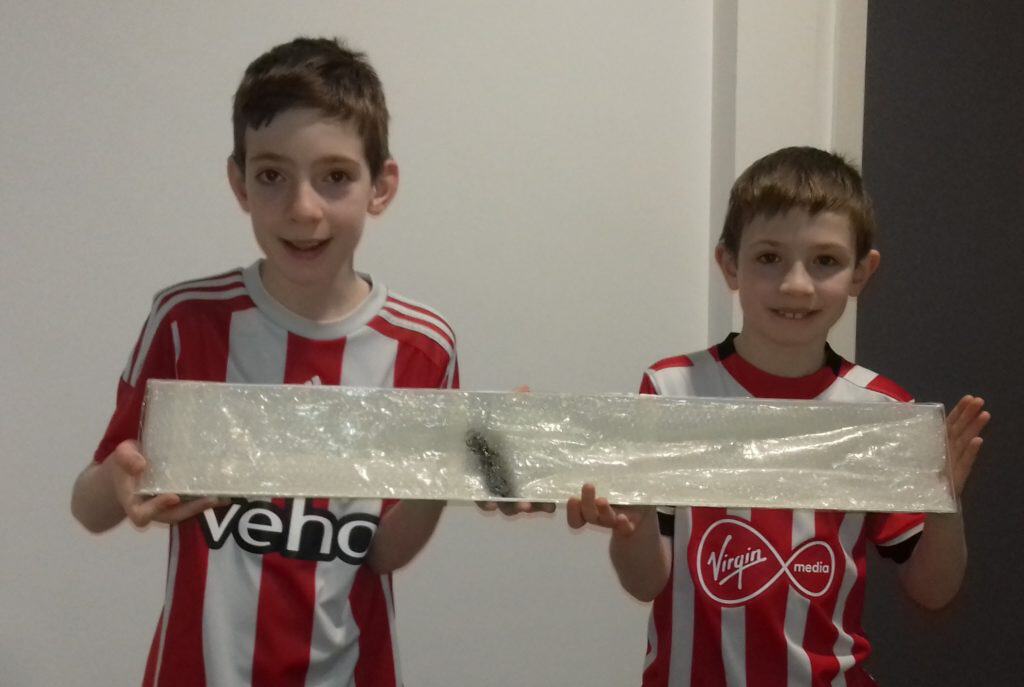 James was voted the winner of the Dysprosium Zone in March 2015. Here he reports back on how he ‘s been using his £500 prize money.
James was voted the winner of the Dysprosium Zone in March 2015. Here he reports back on how he ‘s been using his £500 prize money.
If you’d like the chance to win funding to develop your public engagement project, apply for I’m a Scientist at imascientist.org.uk/scientist-apply
I never expected to win the Dysprosium Zone in March 2015, as that I’m a Scientist event began my hope was to make it past the first eviction, such was the competition within the zone. As for the event itself, the quality and variety of the questions asked was incredible and my typing speed very much increased over the course of two weeks of live chats!
One memory that stands out for me was that our final day coincided with the solar eclipse over the UK. It was a fittingly cloudy day over Cambridge, but one of the schools in the zone had still got outside and measured the changes in light at their school, before sharing it with myself and others in the final open chat. This, and the answers from the other scientists in the zone helped my education to expand further as well, and that was the real joy of I’m a Scientist.

The portable, unmeltable ice core
I had decided to create an artificial (or “fake”) ice core to take to schools. As an Antarctic climate scientist, with an interest in past climates, ice cores are a vital part of that work, but are impractical to take anywhere, especially schools.
My initial plan was a solid bespoke plastic core, however this was unfeasible to source and potentially too heavy to use safely within schools. With help from the I’m a Scientist alumni network mailing list, a suggested new, more “Blue Peter”, design based around drain pipes, bubble wrap and, of course, some sticky back plastic was produced. After a trial using a soft drinks bottle and cling film, I decided to take on the new design. I’m not the most delicate of DIY types, more into demolition than considered construction, but a pretty smart looking core was produced.
Drilling an ice core can be pretty well shown in video resources that have been produced by the British Antarctic Survey. But actually describing how we can use those cores to reproduce past climates is a far trickier concept. Through my artificial ice core, I have a prop that gives an idea of the size of a working piece of core.
Using the core, it is easier to visualise what is meant by “gas bubbles in the ice” and explaining some of the trickier concepts within this branch of palaeoclimate science. The current version of the core, I still see as a prototype and I hope to refine my design as I use it more to ensure it is as useful a resource as possible.
Since I’m a Scientist, I have started to diversify my outreach, and while getting into schools remains the “core” of my outreach activities, I have also started to get involved in more events communicating my science within the local community such as through panel events in the Cambridge Science Festival. I am also getting involved in a national outreach campaign with my funding body the Natural Environment Research Council (NERC) through this year that rolls out in 2018 across the UK.
Finally, there are three thank yous I would like to make. Firstly, I want to extend my thanks to all the IAS team. It is a great experience and one I will always champion whether my colleagues are completely new to outreach or a veteran of the school visit. Secondly, a huge thank you to Anna, Leonie, Olivia and Joe, the other four scientists in the zone, who made the competition fierce yet immensely fun. Finally, to the kids in all the zones, I’m a Scientist is nothing without you, your energy, interest and intrigue is the reason it’s such a success, so a huge thanks to you all.

